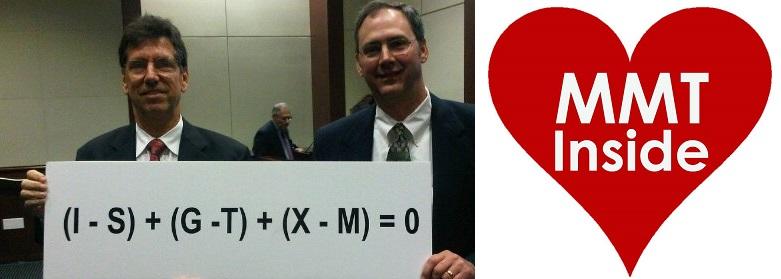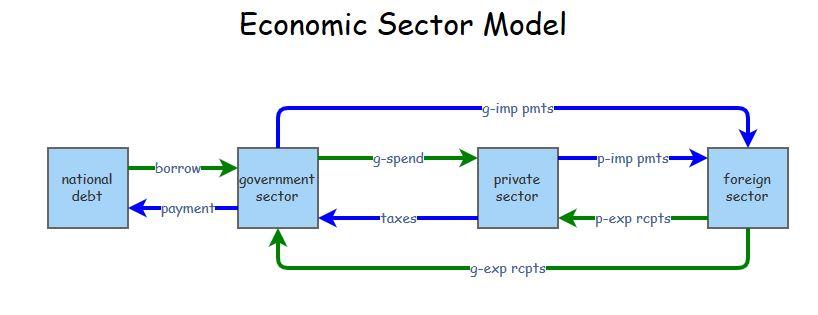Modern monetary system

This model shows the basic functioning and dynamics of a 'modern monetary system'.

The non-government sectors, consisting of the private and foreign sectors initial y starts with zero currency units. It is important to realize that after creating a new currency the government must first spend currency units into the economy before they can be used: without currency units the private sector could not even pay taxes! A government that has its own freely floating currency can create as much money as it wants. It does not need tax receipts to finance its spending, and any money it spends into the economy above that collected in taxes represents income for the private sector. The model show that the government initially created 9 trillion money units, but spent only six trillion into the economy. The six trillion showed up as a government deficit but as wealth in the non-government sector.
Since the government can create as many money units as it wishes and transfer them to the private sector to ensure an adequate level of demand in the economy, austerity is unnecessary: money is available, though real resource may be scarce. This also shows that the government can contribute actively towards the creation of prosperity.
This model was originally created by Gene Bellinger, IM 3206, from which this version was cloned. Using the model: simulate...
Foreign sector: Foreign Countries and Firms to which the government and private sectors make payments for imports of goods and services and receive receipts for exports they make to them.
Government spending: The government makes purchases from the private sector and supports social programs which result in a flow of money from the government to the private sector.
Government taxes: The government levies taxes on the private sector as well as various fees which results in the flow of money from the private sector to the government.
Private sector: Firms, Households and Financial institutions which are privately owned.
Government import payments: The government procures some things directly from outside the country as well as providing foreign aid. Both of these actions result in money flows from the government sector to the foreign sector.
Government export receipts: The government makes sales to the foreign sector which results in money flow from the foreign sector to the government sector.
Private sector payments: The private sectors makes purchases from the foreign sector which results in money flow from the private sector to the foreign sector.
Private sector receipts: The private sector exports goods and services to the foreign sector which results in money flow from the foreign sector to the private sector.


